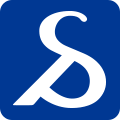


厂商详情
YOAKE Co.,Ltd
| 地址 | 328 Benzaiten-cho Shimogyo-ku Kyoto-si Kyoto, 日本邮编:600-8428 |
|---|---|
| 负责人姓名 | Takayasu Kiga |
| 年收 | 不显示 |
| 公司人数 | 6 |
| 网址 |








其他人感兴趣的
此类产品中的其他产品
SD商品编号:7451994
| 详情 | 价格 & 数量 | ||
|---|---|---|---|
| S1 |
混合编织的可翻转午餐垫 #2
交織リバーシブルランチョンマット#2
(1861400)
|
(1861400)
批发价: 仅限会员
1点/组
售罄
|
|
| S2 |
混合编织的可翻转午餐垫 #7
交織リバーシブルランチョンマット#7
(1861400)
|
(1861400)
批发价: 仅限会员
1点/组
售罄
|
|
| 尺寸 |
|---|
|
45厘米(宽)x 35厘米(高)
|
| 商品规格 |
|---|
描述
| [混合编织] 混合织造是一种织造技术,其中经线和纬线使用两种或更多不同类型的纱线。 天然纤维的混合织造,如棉和丝*以及棉和毛,自古以来被广泛使用。 [使用的是纱线染色的纱线]。 Kakishibu(柿子单宁)和墨汁被用来给线染色,并把它们编织在一起,以生产这种织物。 柿饼染色和须弥座染色是耗时的工艺,每根线都要在染料中浸泡几次。 成品需要更长的时间,但所需的时间和努力的结果是一个温暖和罕见的产品。通过将柿子单宁与苏木和靛蓝纱线交织在一起,创造了一种具有新质感的织物。 随着时间的推移,柿子的单宁变成了更深的颜色,而且越是使用靛蓝,它的味道就越好。 [产品特点]。 这款午餐垫的设计中,上下两面是由交织的织物制成。 正面是可翻转的,背面可以作为纯色使用。 [缝制注意]。 该产品的缝制过程中,织物的边缘向内编织,因此接缝不明显。 [颜色变化] *#2:前表面和后表面两端使用的织物是柿子单宁和苏木墨线交叉编织而成的。 正面中央使用的织物是由柿子单宁和靛蓝纱线混合织成。 *#7:正面两端和背面所用的布料是靛蓝纱和苏米纱的交叉编织。 *#7:用于正面中央的织物是用苏木纱线染色的。 |
更多
| 配送方法 | 估计到达 |
|---|---|
| Sea Mail | 从 05月15日 到 07月17日 |
| Air Mail | 从 04月29日 到 05月01日 |
| EMS | 从 04月28日 到 05月01日 |
| Pantos Express | 从 04月30日 到 05月05日 |
| DHL | 从 04月28日 到 04月30日 |
| UPS | 从 04月28日 到 04月30日 |
| FedEx | 从 04月28日 到 04月30日 |
|
某些交易条件可能仅适用于日本
*本产品使用的面料是自然染色的,所以颜色可能会褪色。
由于染料的性质,当被水或汗水打湿,或被强烈摩擦时,颜色可能会迁移到其他物品上,所以请避免让物品潮湿。 *我们建议你在清洗时将每件物品分开手洗。 |
其他人感兴趣的:
Placemat made in japan此类产品中的其他产品:
混合织造是一种织造技术,其中经线和纬线使用两种或更多不同类型的纱线。
天然纤维的混合织造,如棉和丝*以及棉和毛,自古以来被广泛使用。
[使用的是纱线染色的纱线]。
Kakishibu(柿子单宁)和墨汁被用来给线染色,并把它们编织在一起,以生产这种织物。
柿饼染色和须弥座染色是耗时的工艺,每根线都要在染料中浸泡几次。
成品需要更长的时间,但所需的时间和努力的结果是一个温暖和罕见的产品。通过将柿子单宁与苏木和靛蓝纱线交织在一起,创造了一种具有新质感的织物。
随着时间的推移,柿子的单宁变成了更深的颜色,而且越是使用靛蓝,它的味道就越好。
[产品特点]。
这款午餐垫的设计中,上下两面是由交织的织物制成。
正面是可翻转的,背面可以作为纯色使用。
[缝制注意]。
该产品的缝制过程中,织物的边缘向内编织,因此接缝不明显。
[颜色变化]
*#2:前表面和后表面两端使用的织物是柿子单宁和苏木墨线交叉编织而成的。
正面中央使用的织物是由柿子单宁和靛蓝纱线混合织成。
*#7:正面两端和背面所用的布料是靛蓝纱和苏米纱的交叉编织。
*#7:用于正面中央的织物是用苏木纱线染色的。
Mixed weave is a weaving technique in which two or more different types of yarns are used for the warp and weft.
Mixed weaving of natural fibers, such as cotton and silk* and cotton and wool, has been widely used since ancient times.
[Yarn dyed yarn is used].
Kakishibu (persimmon tannin) and sumi ink are used to dye the threads and weave them together to produce this fabric.
Kakishibu dyeing and sumi-zome dyeing are time-consuming processes in which each thread is soaked in dye several times.
The finished product takes longer, but the time and effort required results in a warm and rare product. By interweaving persimmon tannin with sumi and indigo yarns, a fabric with a new texture is created.
The persimmon tannin turns into a deeper color as the years go by, and the more you use indigo, the more it tastes good. Please enjoy the changes woven by both.
[Product Features]
This luncheon mat has a design in which the top and bottom sides are made of interwoven fabrics.
The front side is reversible, and the back side can be used as a solid color.
[Sewing attention].
This product is sewn with the edges of the fabric woven inward so that the seams are not noticeable.
[Color variations][Color combination][Color range][Color combination][Color combination][Color variation
[Color variations]
*#2: The fabric used on both ends of the front surface and the back surface is a cross weave of persimmon tannin and sumi ink yarn.
The fabric used for the center of the front surface is a mixed weave of persimmon tannin and indigo yarns.
*#7: The fabric used for both ends of the front surface and the back surface is a cross weave of Indigo and Sumi yarns.
The fabric used for the center of the front surface is yarn-dyed with sumi yarn.